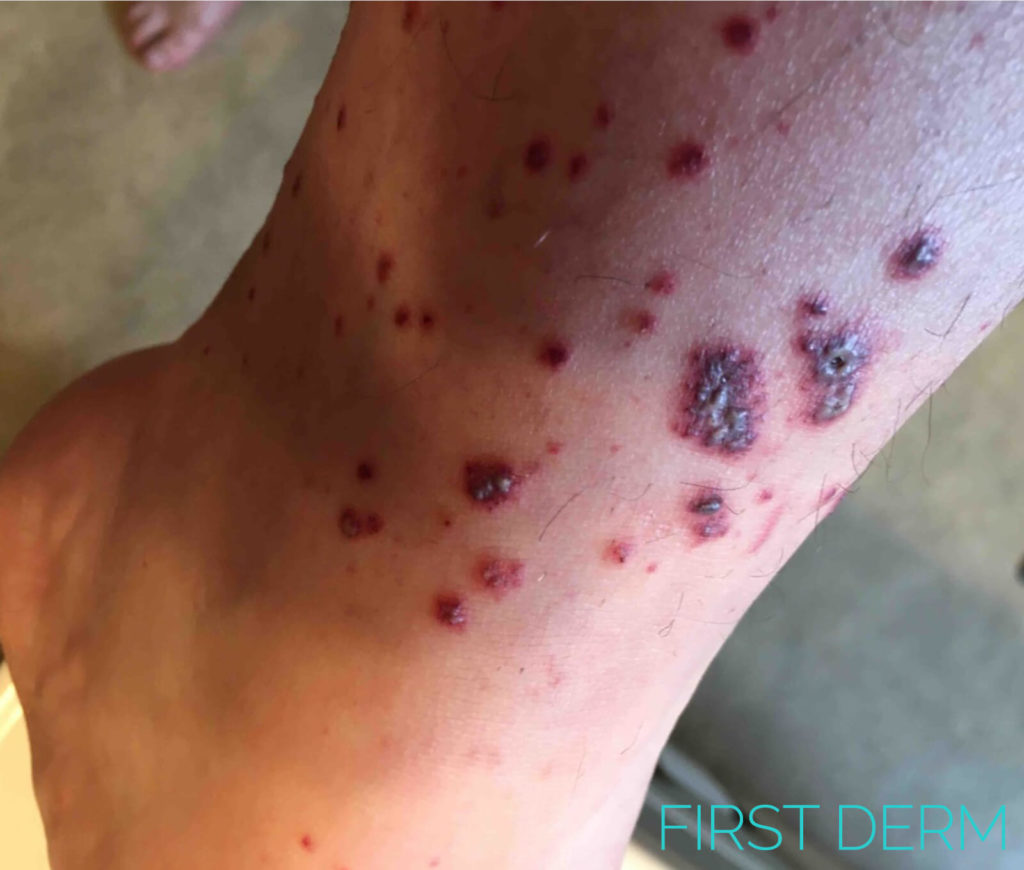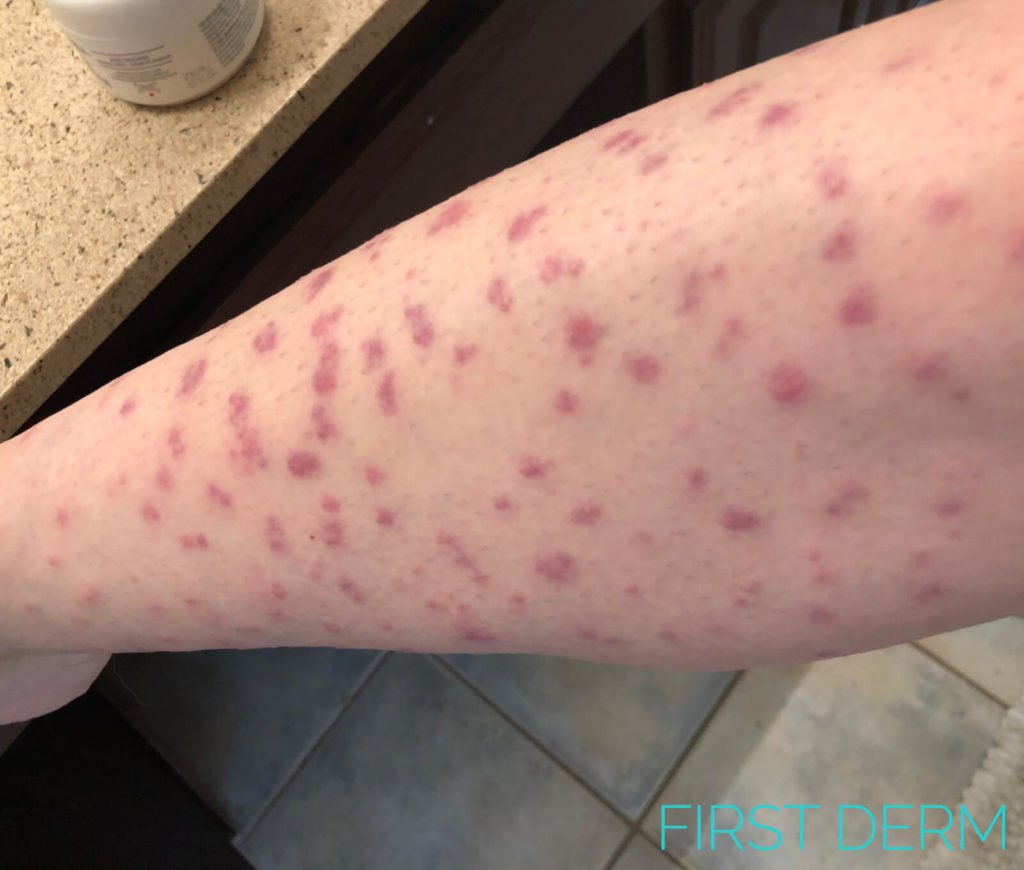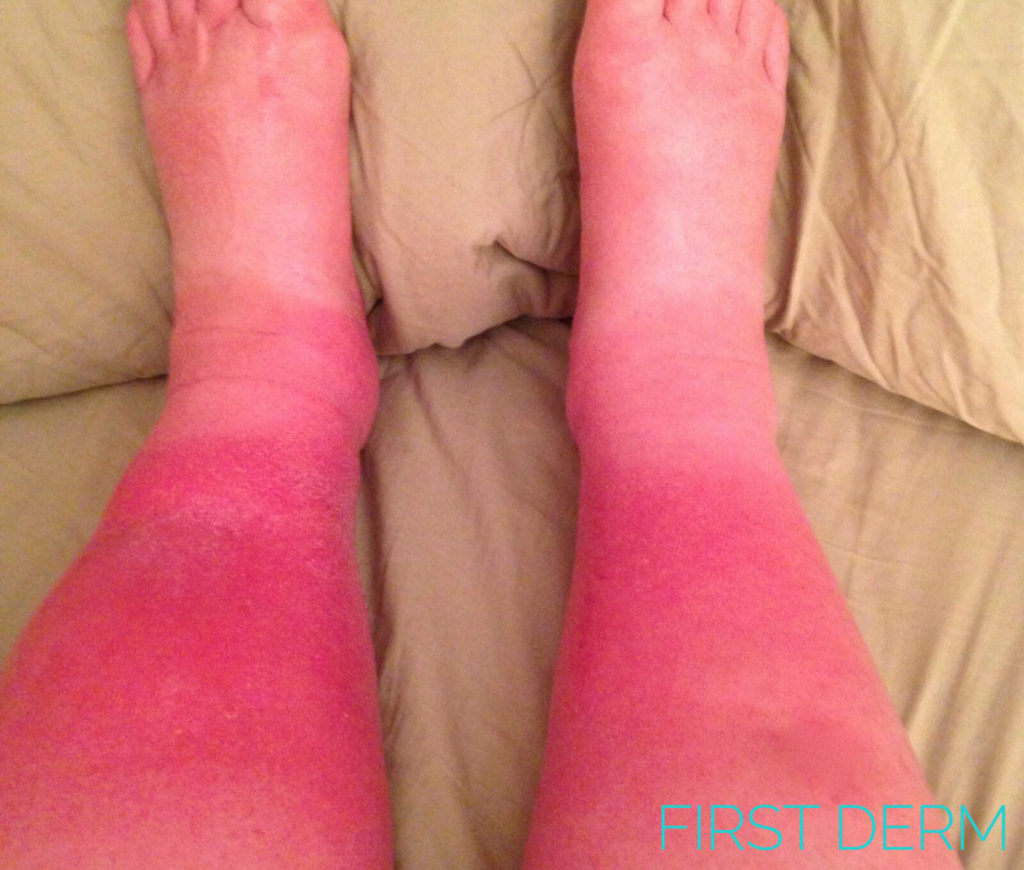Life Threatening Skin Rashes

Life Threatening Skin Rashes
Wondering if a rash could be life-threatening? You wouldn’t be wrong to do so! Although most rashes are just bothersome and can be treated over the counter, there are some that are dangerous. The rash itself is not going to kill you, but it is often a sign of a serious disease or illness.
We have found four rashes in particular that are associated with high morbidity rates and mortality. These life threatening skin rashes come in many forms but they all have one thing in common. They need a timely diagnosis and treatment which can only be achieved by looking for the signs early. If you notice something that looks like these skin diseases then speak to our dermatologists for an immediate answer.
Try our FREE dermatology search engine and get peace of mind within a second.
Rocky Mountain Spotted Fever
The first of the life threatening skin rashes on our list.
How it Transmits
This disease is commonly spread through ticks. Ticks are responsible for transmitting many diseases a prime example being lyme disease. There are 2 ticks that cause lyme disease: the Dermacentor variabilis (American dog tick) in the eastern United States or D. andersoni (Rocky Mountain wood tick) in the western United States.
This disease first appeared in Idaho and Montana, hence the name. However, most cases are concentrated in the south central and southeastern United States. The disease has been reported in almost every state so the name is a little deceiving. Wherever you are, if you’re frequently visiting wooded areas (where ticks are most common) then you are at risk.
Who it Affects
Since this is transmitted via ticks it can affect just about anybody. It is usually a seasonal disease and most cases occur in the spring and summer when ticks are most active. If you spend time outdoors then its worth checking for these.
The mortality rate ranges from 5% – 25% (1) so this is not a disease to take chances with.
What The Rash Looks Like
Stage 1 usually lasts for around 4 days. You may notice:
- Fever
- Malaise
- Myalgia
- Sever Headaches
Stage 2 is typically when the rashes appear. They usually start on day 4 and will last anywhere up to a couple of weeks. Starting on the ankles and wrists, the rashes will spread to involve the trunk of the body.
Initially, the rash will consist of small pink or red macules that go white with pressure. Over time, the rash evolves into petechia and purpura (pimple and pus spots). Gangrenous areas may even develop on the fingers, toes, nose, ears, scrotum, or vulva. Involvement of the scrotum or vulva is a diagnostic clue.
Treatment
Prognosis depends heavily on recognising the disease early and treating with antibiotics (2). If the diagnosis comes too late this could prove to be fatal.
Try our FREE dermatology search engine and get peace of mind within a second.
Meningococcal Disease
How it Transmits
This disease is caused by a form of bacteria known as Neisseria meningitidis. Interestingly, 10% to 20% of healthy people carry this organism but it usually spreads in close conditions such as in the military or college dormitories. The transmission occurs through respiratory droplets at close proximity.
Who It Affects
This usually affects younger people, those younger than 20 years of age are the highest risk. The disease is also most common in the winter and spring.
What The Rash Looks Like
This life threatening rash usually manifests itself on the skin very early on. Since this disease develops rapidly, checking your rash early is important. The disease will typically appear as red or purple discolored spots that do not fade upon applying pressure, also called purpura. The spots are caused by bleeding underneath the skin from the infection.
Treatment
As with many of these diseases, early treatment is absolutely vital. Antibiotics are typically the best course of treatment but we suggest getting your rash checked immediately.
Try our FREE dermatology search engine and get peace of mind within a second.
Staphylococcal Toxic Shock Syndrome
How it Transmits
Another bacteria induced disease: Toxic Shock Syndrome. The body releases toxins after an overgrowth of a bacteria known as Staphylococcus aureus. It was originally associated with menstruation and tampon use. However, nonmenstrual cases have occurred among both sexes and are currently more common (3).
Nonmenstrual causes include:
- Influenza
- Childbirth
- Tracheitis
- Surgical wound infections
- Nasal packing
- Barrier contraceptives
Who it Affects
This disease can affect people for various reasons and at any age. Since non-menstrual cases are now the most common we suggest monitoring anyone who could be high risk according to the causes above.
The mortality rate has decreased to less than 5% in menstrual-related cases but is two to three times higher in non-menstrual cases.
What The Rash Looks Like
Apart from the usual fever and malaise symptoms, these life threatening rashes appear on the skin very distinctly. The rash includes:
- A sunburn like diffuse macular erythroderma
- Followed by peeling, especially of the hands and feet – within 5 to 14 days
- Conjunctival injection (bloodshot, red eyes)
- A strawberry tongue
- Less frequent manifestations are water swelling of the hands and feet, petechiae (red and purple dots on skin), and in time, loss of nails and hair
Treatment
Treatment involves identification and removal of the source of S. aureus. Then a course of antibiotics with appropriate supportive care. There are various other treatments but all will require the help of a professional. We suggest getting checked for that suspicious rash and using us a way to fast-track yourself to an appointment.
Try our FREE dermatology search engine and get peace of mind within a second.
Streptococcal Toxic Shock Syndrome
Last but certainly not least on our list of life threatening skin rashes. This rash may sound similar to the last one but is arguably one of the most deadly…
How It Transmits
This is another form of toxic shock syndrome. However, this diseases is connected to a different bacteria. Known as Streptococcus pyogenes- “the flesh-eating bacteria”. It usually transmits via soft tissue infections such as Cellulitis. This bacteria will look for any way in and usually uses one of the following as its chance to infect you:
- Burns on skin
- Laceration
- Surgical incision
- Decubitus ulcer
- Childbirth trauma
- Varicella lesion
Who It Affects
The age range of most patients is 20 to 50 years. The absence of protective immunity is thought to be a risk factor for this age-group. The mortality rate ranges from 30 to 70%.
What the Rash Looks Like
The pain is typically localized to an extremity and is often disproportionate to the findings on examination. A thorough examination of the skin will often detect subtle evidence of a soft tissue infection such as:
- Localized swelling
- Tenderness
- Erythema
- Violaceous bullae that may be seen in necrotizing fasciiti
- Desquamating erythroderma may be present but is less common than in staphylococcal toxic shock syndrome.
Treatment
Once again this rash and disease needs to be treated swiftly. Once the diagnosis is confirmed, definitive treatment consists of both penicillin G and clindamycin. The latter suppresses bacterial toxin synthesis and inhibits protein synthesis. Aggressive supportive care is necessary for anyone with this disease (4)
We hope these diseases have peaked your interest in how rashes can play a vital role in getting help. You should look at rashes as your body trying to send you a message. Do not ignore it! Especially if you can find a connection between yourself and the causes outlined above. Remember that, despite long waiting times in the US, you can still speak to our online dermatologists within hours.
Try our FREE dermatology search engine and get peace of mind within a second.
Related articles
Ask a Dermatologist
Anonymous, fast and secure!

The Specialist doctor from the University Hospital in Gothenburg, alumnus UC Berkeley. My doctoral dissertation is about Digital Health and I have published 5 scientific articles in teledermatology and artificial intelligence and others.




